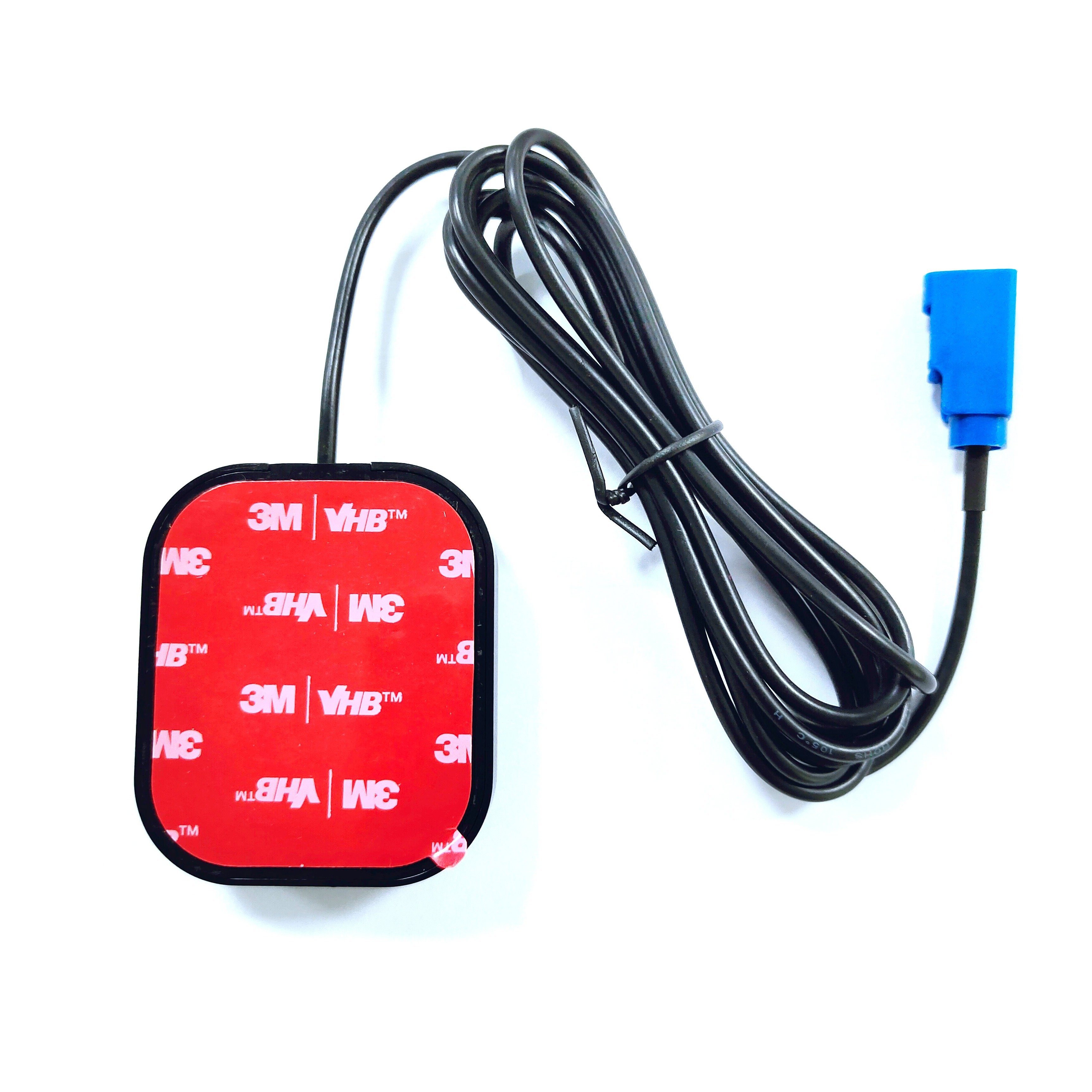5.1 Current Applications
5.1.1 Surveying and Mapping
In the surveying and mapping industries, high - sensitivity GNSS RTK active antennas are widely used. Surveyors rely on these antennas to accurately measure land boundaries, topographical features, and elevation levels. The centimeter - level accuracy provided by GNSS RTK technology, enabled by these antennas, allows for the creation of highly detailed and accurate maps.
For large - scale mapping projects, such as mapping entire regions or countries, high - sensitivity GNSS RTK active antennas can be mounted on vehicles or aircraft. These mobile mapping systems can quickly and accurately collect data over large areas. In construction projects, surveyors use GNSS RTK antennas to set out building foundations, roads, and other infrastructure elements with high precision. This helpsto minimize errors during the construction process, ensuring that the final structure adheres to the design specifications. For instance, in the construction of highways, surveyors use GNSS RTK active antennas to mark the exact positions of road edges, lane dividers, and drainage systems. This level of precision not only improves the quality of the construction but also reduces the need for rework, saving both time and costs.
In the field of cadastral surveying, which involves the determination of land ownership boundaries, high - sensitivity GNSS RTK active antennas are indispensable. These antennas allow surveyors to accurately locate boundary markers, even in remote or difficult - to - access areas. The data collected using these antennas is used to update land records and resolve boundary disputes, ensuring fair and accurate land ownership documentation.
5.1.2 Autonomous Vehicles
The autonomous vehicle industry is one of the fastest - growing adopters of high - sensitivity GNSS RTK active antennas. Autonomous vehicles require real - time, high - precision positioning to navigate safely and efficiently. High - sensitivity GNSS RTK active antennas provide the centimeter - level accuracy needed for tasks such as lane keeping, obstacle avoidance, and path planning.
In advanced driver - assistance systems (ADAS), these antennas work in conjunction with other sensors like cameras, lidar, and radar to provide a comprehensive perception of the vehicle's surroundings. For example, when an autonomous vehicle is changing lanes, the GNSS RTK active antenna provides the exact position of the vehicle relative to the lane markers, while the camera and lidar systems detect other vehicles and obstacles in the vicinity. This integration of multiple sensors, with the GNSS RTK active antenna as a key component, ensures that the vehicle makes safe and informed decisions.
Moreover, in fully autonomous driving scenarios, where the vehicle operates without human intervention, the reliability of the positioning system is critical. High - sensitivity GNSS RTK active antennas, with their ability to receive signals in challenging environments such as urban canyons and tunnels (when combined with other positioning technologies like inertial navigation systems), ensure that the vehicle maintains accurate positioning even in areas with poor satellite visibility. This is essential for the widespread deployment of autonomous vehicles on public roads.
5.1.3 Precision Agriculture
Precision agriculture is another major application area for high - sensitivity GNSS RTK active antennas. In modern agriculture, farmers are increasingly relying on technology to optimize crop yields and reduce resource waste. High - precision positioning provided by these antennas enables a range of precision farming techniques.
One common application is variable - rate technology (VRT). With VRT, farmers can adjust the application of fertilizers, pesticides, and water based on the specific needs of different areas of a field. High - sensitivity GNSS RTK active antennas are used to precisely locate the agricultural equipment (such as tractors and sprayers) in the field. This allows the equipment to apply the right amount of resources to each section of the field, based on soil conditions, crop growth stages, and other factors. For example, if a certain area of the field has a higher nutrient content, the VRT system can reduce the amount of fertilizer applied there, while increasing the application in areas with lower nutrient levels. This not only reduces the cost of inputs but also minimizes the environmental impact of agriculture.
Another application in precision agriculture is automated guidance systems for agricultural machinery. Tractors and harvesters equipped with high - sensitivity GNSS RTK active antennas can operate with high precision, following pre - determined paths in the field. This eliminates the need for manual steering, reducing operator fatigue and improving the efficiency of the machinery. Automated guidance systems also ensure that the machinery operates in straight lines, reducing overlaps and gaps in the field. This is particularly important for tasks such as planting and harvesting, where precise spacing is crucial for optimal crop growth and yield.
5.2 Future Trends
5.2.1 Integration with 5G Technology
The integration of high - sensitivity GNSS RTK active antennas with 5G technology is expected to be a major future trend. 5G networks offer high data transfer rates, low latency, and high reliability, which can complement the capabilities of GNSS RTK systems.
One of the key benefits of this integration is the ability to transmit RTK correction data more efficiently. In traditional RTK systems, the base station transmits correction data to the rover via radio or cellular networks. With 5G, the transmission of this data can be done in real - time with extremely low latency. This is particularly important for applications such as autonomous vehicles, where even a small delay in the correction data can affect the accuracy of the positioning and potentially lead to safety issues. Low - latency 5G networks ensure that the rover receives the correction data almost instantaneously, allowing for more accurate and responsive positioning.
Additionally, 5G technology can enable the deployment of more dense networks of base stations. This increased density can improve the coverage and accuracy of GNSS RTK systems, especially in urban areas and other challenging environments. With more base stations, the rover can receive correction data from multiple sources, reducing the impact of any single base station failure and improving the overall reliability of the system.
Furthermore, the combination of 5G and GNSS RTK can enable new applications that require high - precision positioning and high - speed data transfer. For example, in smart cities, 5G - enabled GNSS RTK active antennas can be used to track the movement of public transportation vehicles in real - time, optimize traffic flow, and manage parking spaces. The high - precision positioning data, combined with the high - speed data transfer capabilities of 5G, allows for more efficient management of urban infrastructure.
5.2.2 Miniaturization and Low - Power Design
As technology advances, there is a growing demand for smaller and more power - efficient electronic devices. This trend is also expected to impact the design of high - sensitivity GNSS RTK active antennas.
Miniaturization of the antenna design will allow for easier integration into a wider range of devices. For example, in the consumer electronics sector, smaller GNSS RTK active antennas can be integrated into smartphones, wearables, and other portable devices. This would enable new applications such as precise indoor positioning (when combined with other technologies like Bluetooth and Wi - Fi) and location - based services that require high - precision positioning. In the medical field, miniaturized antennas could be used in wearable devices to track the movement of patients with chronic conditions, providing healthcare providers with accurate data on their patients' activities.
Low - power design is another important future trend. As more devices become battery - powered, reducing the power consumption of the GNSS RTK active antenna is crucial. Manufacturers are expected to develop new LNAs and antenna designs that consume less power while maintaining high performance. For example, the use of advanced semiconductor materials and low - power circuit designs can reduce the power consumption of the LNA. Additionally, the development of energy - harvesting technologies, such as solar - powered antennas, could further extend the battery life of devices equipped with these antennas. This is particularly important for applications such as remote sensing and wildlife tracking, where devices may need to operate in the field for long periods without access to a power source.
5.2.3 Enhanced Anti - Interference Capabilities
With the increasing use of wireless communication technologies, the electromagnetic environment is becoming more complex. This has led to a growing concern about interference with GNSS signals. In the future, high - sensitivity GNSS RTK active antennas are expected to have enhanced anti - interference capabilities to address this issue.
One approach to improving anti - interference is the use of advanced signal processing algorithms. These algorithms can detect and mitigate different types of interference, such as narrow - band interference, wide - band interference, and spoofing attacks. For example, adaptive filtering algorithms can dynamically adjust the filter parameters to block out interference while preserving the GNSS signals. Machine learning algorithms can also be used to train the antenna system to recognize different types of interference patterns and respond accordingly.
Another trend in anti - interference design is the use of antenna arrays with beamforming technology. Beamforming allows the antenna to focus its radiation pattern in the direction of the satellite signals, while suppressing signals from other directions (where interference may be coming from). This can significantly reduce the impact of interference on the GNSS signals. Additionally, multiple - input multiple - output (MIMO) technology, which uses multiple antenna elements for both transmission and reception, can improve the anti - interference capabilities of the antenna system. MIMO technology can exploit the spatial diversity of the signals to reduce the effects of interference and improve the reliability of the positioning.
Conclusion
High - sensitivity GNSS RTK active antennas have emerged as a critical technology in modern positioning and navigation systems. Their ability to receive weak satellite signals, amplify them with low noise, and enable centimeter - level accuracy through RTK technology has made them indispensable in a wide range of applications, including surveying and mapping, autonomous vehicles, and precision agriculture.
In terms of design and construction, the use of advanced antenna elements (such as patch and helical antennas), integrated LNAs, and rugged enclosures has ensured that these antennas can perform well in various environments. The working principles, which involve signal reception, amplification with noise reduction, and RTK signal processing, form the basis of their high - precision positioning capabilities.
While high - sensitivity GNSS RTK active antennas offer numerous advantages, they also face challenges such as interference susceptibility, power consumption, and cost and complexity. However, ongoing technological advancements are addressing these challenges. For example, the integration with 5G technology is expected to improve the efficiency and reliability of RTK systems, while miniaturization and low - power design will expand their application range. Enhanced anti - interference capabilities will also ensure that these antennas can operate effectively in an increasingly complex electromagnetic environment.
Looking ahead, the future of high - sensitivity GNSS RTK active antennas is promising. As the demand for high - precision positioning continues to grow in various industries, these antennas will play an even more important role. The development of new technologies and the integration with other advanced systems will further enhance their performance and expand their application areas. Whether it is in the deployment of autonomous vehicles on public roads, the optimization of agricultural production, or the creation of detailed maps for smart cities, high - sensitivity GNSS RTK active antennas will continue to be a key enabler of technological progress and innovation.
In conclusion, high - sensitivity GNSS RTK active antennas are a vital component of modern positioning systems, with significant potential for future development. Their impact on various industries will only continue to grow as technology advances, making them an essential technology for the future of navigation and positioning.




































































 Language
Language
 En
En Cn
Cn Korean
Korean

 Home >
Home > 






 18665803017 (Macro)
18665803017 (Macro)













